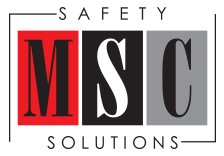Why Safety Professionals Should Not Be the Enforcers of Safety Rules
In many organizations, safety professionals are often seen as the gatekeepers and enforcers of safety rules and regulations. While this may seem logical on the surface, after all, who better to enforce safety than the experts? This approach can be counterproductive and may undermine the very safety culture that these professionals are working so hard to cultivate. Here’s why safety professionals should focus on guidance and education rather than enforcement.
The Role of Safety Professionals
Safety professionals are skilled individuals with in-depth knowledge of safety regulations, risk management, and best practices in workplace safety. Their primary role is to identify potential hazards, develop safety programs, provide training, and serve as a resource for employees and management alike. They are consultants, educators, and advisors whose expertise is essential in creating a safe work environment. However, when they are also tasked with enforcing rules, it can blur the lines between guidance and policing, potentially leading to several issues.
Conflict of Interest
When safety professionals are also the enforcers, they may find themselves in a conflict of interest. Their role should be one of collaboration and support, helping to foster a culture of safety where everyone feels responsible for following the rules. However, if they are seen as enforcers, employees may be less likely to approach them with concerns or questions, fearing repercussions. This can lead to underreporting of incidents or hazards, as workers might be reluctant to disclose information that could lead to punitive measures.
Erosion of Trust
Trust is a critical component of any safety program. Employees need to feel that they can trust safety professionals to have their best interests at heart. When safety professionals are cast in the role of enforcers, it can create an adversarial relationship. Instead of being seen as allies in promoting safety, they may be viewed as the “safety police” who are more interested in catching violations than in helping employees work safely. This can lead to a breakdown in communication and cooperation, ultimately making the workplace less safe.
Dilution of Effectiveness
Enforcement requires a different skill set than education and guidance. Safety professionals are trained to identify risks, develop strategies to mitigate those risks, and educate employees on safe practices. When they are also expected to enforce rules, their time and energy are divided between these roles, potentially diluting their effectiveness in both. Enforcement is better handled by supervisors or dedicated compliance officers who can ensure that rules are followed without compromising the role of safety professionals as educators and advisors.
Encouraging Ownership of Safety
A key goal of any safety program is to encourage employees to take ownership of safety. When safety professionals are the enforcers, it can send the message that safety is someone else’s responsibility—specifically, the safety professional’s. This can lead to a lack of personal accountability among employees. However, when safety professionals focus on education and
empowerment, they can help employees understand that safety is everyone’s responsibility. This can lead to a more proactive approach to safety, where employees are more likely to follow rules and report hazards because they understand the importance of doing so, not because they fear punishment.
Promoting a Positive Safety Culture
A positive safety culture is one where safety is integrated into every aspect of the organization and is seen as a shared responsibility. When safety professionals are seen as part of the team rather than as enforcers, it promotes a more positive and collaborative safety culture. Employees are more likely to engage in safety programs, participate in training, and take an active role in identifying and mitigating risks.
Safety professionals play a vital role in creating and maintaining a safe work environment, but they should not be tasked with enforcing safety rules. By focusing on education, guidance, and collaboration, safety professionals can help build a culture of safety where everyone takes responsibility for following the rules. This not only leads to a safer workplace but also to one where employees feel empowered to contribute to safety initiatives and to work together to prevent accidents and injuries.




